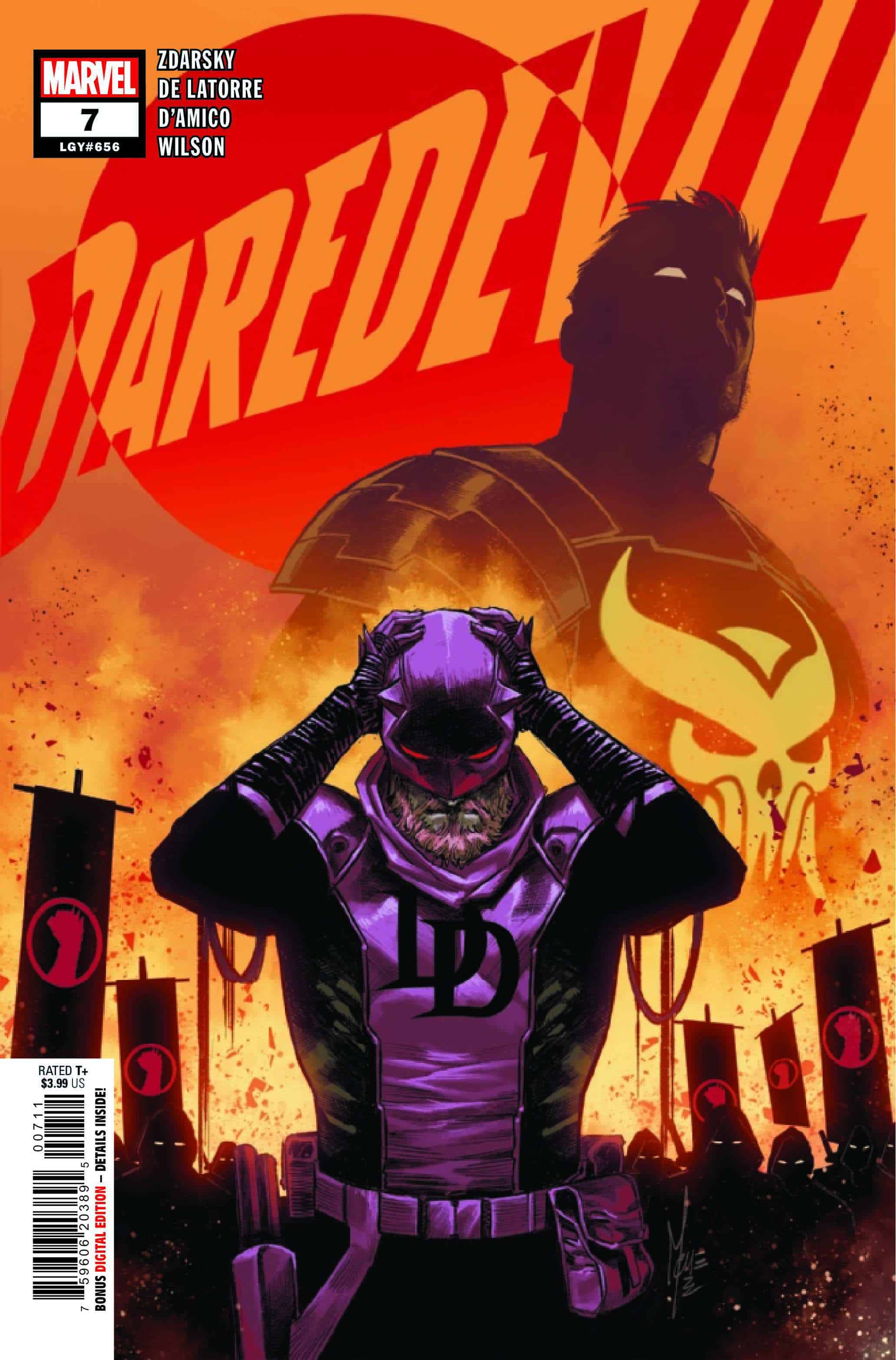Daredevil #7

Recap
BETRAYAL! As Daredevil, both Elektra and Matt Murdock have made a home for super villains at the new stronghold of the Fist. But not everyone they've welcomed shares their vision for how things should be done. In this issue, that's going to cost them - and put them on a collision course with the rest of the Marvel Universe!
Review
Daredevil is six issues in and so far it’s all set up. There have been moments of action–Elektra and Matt fighting for leadership of the Fist, Matt liberating the supermax prison, Elektra going after the president. But even those actions aren’t goals in and of themselves so much as stepping stones toward Matt’s endgame. Daredevil #7 finally takes everything Matt has been building and puts it in action.
Daredevil #7 essentially tells two stories, each representative of two sides of Matt’s ambitions. The A story is in line with Matt’s desire to work outside what he considers a failed system in order to actually help people. This takes the form of Matt and some of his new followers helping apartment residents being evicted under false pretenses so the building’s new owner can make more money. The residents are trying to resist in the face of excessive police force. Matt and company fight off the police and defuse bombs meant to demolish the building whether it’s empty or not. He also uses an injunction to prevent the residents from being evicted.
The B story in Daredevil #7 is another chapter in the long developing Fist versus Hand arc. The story in this issue opens with the first page providing a barebones recap of what’s going on with the Punisher, Aka, and the Hand. This arc returns in the issue’s closing pages when Matt discovers he can read the book of prophecy that he, Elektra, and Stick are relying on. There’s no opportunity to spend time on this revelation, though, because one of Matt’s new followers has been captured by the Hand and is being held hostage in an obvious trap.
Zdarsky’s Matt Murdock is a constantly conflicted character in this run. His back and forth on whether or not he has free will and the lengths he’ll go to convince others (and himself) that he does is the perfect example. And indeed this issue comes up again in Daredevil #7 as Matt mentally concedes that despite his assertion to Goldy that he has free will and is in control, he is following a prophecy.
This internal conflict as a theme rears its head in a new way here when Matt takes on the company trying to evict the apartment residents. His initial response is extralegal violence. Matt does say that violence should only be used when absolutely necessary, but it’s noteworthy that his first response is one that will all but necessitate it. So already he’s committing himself to a course that he later cautions his people against. But more interesting is that Matt turns to the law to end the evictions. Zdarsky spent the lion’s share of six issues building Matt up as a character who believes the legal system is fundamentally broken. And yet here Matt is, relying on that broken system to win this particular battle. I hope this conflict is revisited in some way in the future.
Matt also preaches the importance of choice and freedom for the criminals he liberated from the supermax, and yet when Bullet chooses to leave in this issue, Matt gives him something that will surreptitiously track him wherever he goes.
Art duties in Daredevil #7 are handled jointly by De Latorre and Checchetto with D’Amico handling inks, and it proves quite effective. Their styles are noticeably different, but those differences are subtle enough that the two artists are fairly complementary. On top of that, Matthew Wilson continues to be the unifying factor in the book. It’s not uncommon to see coloring choices change to suit different artists, but Wilson hasn’t done that in the series, nor does he need to. De Latorre is stronger with character emotions. Checchetto’s action sequences are rugged, bordering on more visceral. And Wilson underscores both of them, elevating both their work.
Matt’s radar vision returns in a few panels in this issue. This is a nice effect, and Matt comments on it being a result of his sense being enhanced due to his Fist leadership. It’s a good visual reminder of what he’s become. Yes, his costume tells us that. But a costume is easy to change. A visual representation of Matt’s powers, especially as it relates to a power increase, speaks to something more inherent to who he is as a person.
Final Thoughts
Daredevil #7 continues a series trend where the more down to Earth, character oriented story elements are much stronger than the long developing Fist/Hand arc. As welcome as the opening page recap was for what’s going on with the Punisher side of this story, I still found myself losing interest in these moments. This is another strong issue, but I would like to see Zdarsky find more balance in these two sides of Matt’s motivation.
Daredevil #7: Maybe the Law isn’t Broken
- Writing - 10/1010/10
- Storyline - 8.75/108.8/10
- Art - 10/1010/10
- Color - 10/1010/10
- Cover Art - 10/1010/10





